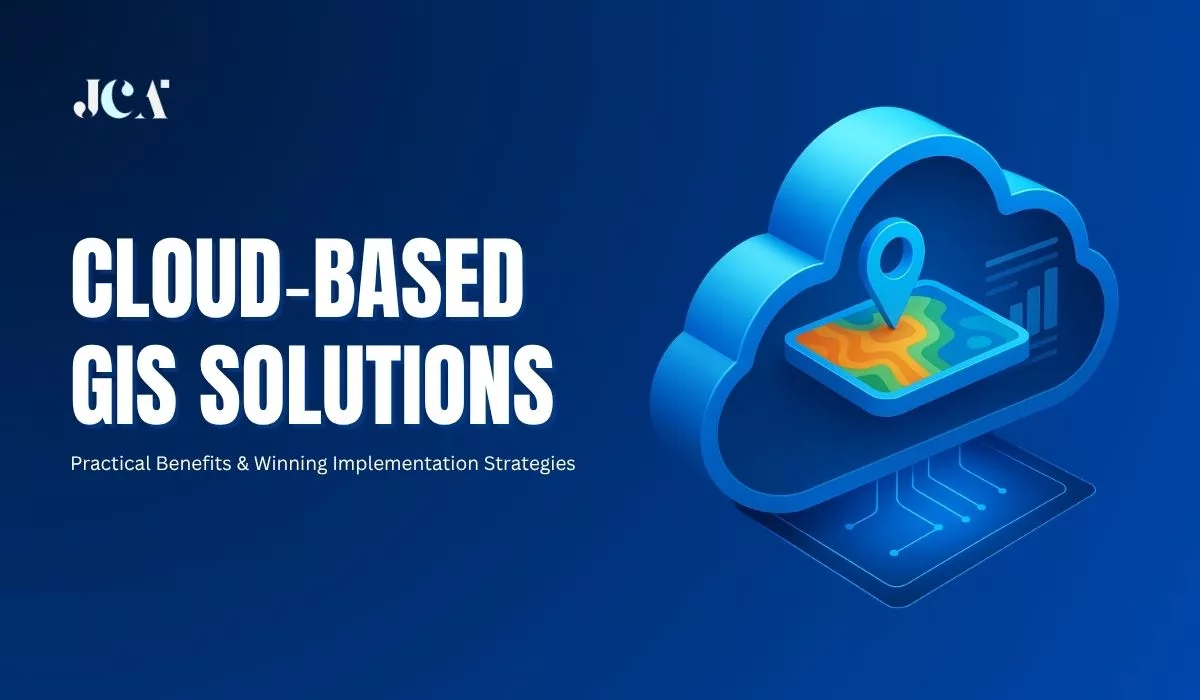Geographic Information Systems (GIS) have undergone a significant transformation over the past few decades. Once confined to specialized on-premise setups, GIS has now expanded into the cloud, enabling real-time data access, advanced analytics, and seamless collaboration.
This evolution reflects the broader shift in digital infrastructure, from static, localized systems to dynamic, scalable, and connected platforms. As organizations seek more agile GIS Solutions, understanding how traditional and cloud-based systems differ is crucial for strategic decision-making.
What Is Traditional GIS? Core Features and Limitations
Traditional Geographic Information Systems (GIS) are typically on-premise solutions installed and operated within an organization’s physical infrastructure. They depend on locally hosted servers, desktop-based software, and manual data management to store, process, and analyze geospatial information.
This model offers direct control over data governance, security settings, and network configurations, a valuable advantage for agencies and industries with strict data compliance standards, such as government defense, utilities, or environmental monitoring in restricted zones.
Key features of traditional GIS include customized installations, offline processing, and high-performance local computation, often optimized for specialized workflows. However, this localized approach comes with notable challenges. Traditional systems can be costly to deploy and maintain, requiring continuous hardware investments, periodic upgrades, and dedicated IT staff for system administration.
Moreover, as data volumes expand and teams become more distributed, traditional GIS often struggles with limited scalability, restricted remote access, and poor integration with modern data ecosystems. Collaborative mapping, real-time data feeds, and cross-platform analytics are harder to implement due to closed architectures and manual update cycles.
Consequently, while traditional GIS excels in controlled environments, it can constrain innovation and agility in fast-evolving geospatial operations.
Understanding Cloud-Based GIS: Modern Capabilities and Architecture
Cloud-Based GIS represents the evolution of geospatial technology into a web-first, service-oriented paradigm. Instead of depending on physical servers, cloud GIS utilizes virtualized infrastructure, distributed data storage, and web APIs to host, manage, and analyze spatial data. Users can access maps, datasets, and analytical tools from any device with internet connectivity, often through browser-based dashboards or mobile apps.
The architecture of modern cloud GIS is built around elastic computing, and resources can automatically scale up or down based on workload demands. This enables real-time data streaming, AI-driven spatial analysis, and integration with Internet of Things (IoT) sensors, drones, and other smart devices.
For instance, a city’s traffic management system can ingest live GPS feeds, process spatial patterns in the cloud, and instantly update congestion maps accessible to both analysts and citizens.
Another defining feature of cloud GIS is its continuous deployment model. Software updates, security patches, and feature enhancements are applied automatically, ensuring that users always operate with the latest capabilities.
This architecture promotes collaborative workflows, data interoperability, and cost efficiency through pay-as-you-go or subscription-based pricing models, eliminating the need for expensive hardware or local storage.
Ultimately, cloud GIS transforms spatial analysis into a dynamic, interconnected ecosystem, empowering organizations to harness geospatial intelligence at scale and in real time.
Key Differences Between Traditional and Cloud-Based GIS
When comparing traditional GIS and cloud-based GIS, several key distinctions emerge across deployment, accessibility, cost, and performance dimensions:
|
Aspect |
Traditional GIS |
Cloud-Based GIS |
| Deployment Model | Installed on local servers or desktops | Hosted on virtual cloud infrastructure |
| Scalability | Limited by local hardware capacity | Elastic, scalable on demand |
| Accessibility | On-premise access, often restricted to internal networks | Accessible from any location or device via the web |
| Maintenance | Manual updates, frequent downtime | Automated updates and version control |
| Collaboration | Often isolated, file-based sharing | Real-time, multi-user collaboration |
| Cost Structure | High upfront capital expenditure | Subscription-based or usage-based pricing |
| Integration | Difficult to connect with modern APIs or cloud services | Easily integrates with AI, IoT, and enterprise platforms |
| Security & Compliance | Strong local control, but complex to manage at scale | Managed security, compliance tools, and cloud certifications |
These distinctions highlight a fundamental shift in how organizations manage geospatial data. While traditional GIS remains valuable for certain mission-critical or offline scenarios, the flexibility, interoperability, and cost efficiency of cloud GIS make it increasingly indispensable for modern data-driven enterprises.
As industries move toward digital transformation and smart infrastructure, cloud-native GIS platforms are becoming the foundation for advanced spatial analytics, enabling faster decision-making, improved collaboration, and more sustainable resource management.
Performance and Scalability: How Cloud GIS Changes the Game
Performance and scalability represent two of the most compelling advantages of cloud-based GIS. By distributing workloads across multiple servers, cloud GIS minimizes processing delays and allows for instant scaling during high-demand periods.
In contrast, traditional GIS performance is limited by hardware capacity, which can bottleneck data-intensive operations. Cloud infrastructure also enables faster deployment of new projects, supporting large datasets, 3D visualization, and real-time spatial analytics without the need for costly hardware upgrades.
Cost Comparison: On-Premise Infrastructure vs. Cloud Subscription Models
From a financial perspective, traditional GIS typically involves significant capital expenditures for servers, software licenses, and maintenance. In contrast, cloud GIS operates on a subscription or pay-as-you-go model, converting capital costs into manageable operational expenses.
While cloud subscriptions can add up over time, the reduced need for physical hardware, IT support, and system downtime often offsets these costs. This makes cloud GIS a more flexible and scalable investment, particularly for growing organizations or project-based operations.
Data Accessibility and Collaboration: A New Era for GIS Users
Cloud-based GIS has revolutionized data sharing and collaboration. Teams across different locations can now work on the same datasets in real time, eliminating version control issues common in traditional systems.
This accessibility fosters interdisciplinary collaboration and empowers non-GIS professionals to participate in spatial analysis through user-friendly interfaces. As a result, organizations gain faster insights and more cohesive decision-making processes.
Security and Data Privacy Considerations in GIS Deployment
Security remains a top priority in both GIS models. Traditional GIS offers control through on-premise data storage, which appeals to institutions managing sensitive or classified information.
Conversely, cloud GIS providers invest heavily in encryption, multi-factor authentication, and compliance certifications. However, data privacy regulations and governance policies must still be carefully managed to ensure secure and compliant cloud deployment. Choosing the right GIS requires balancing accessibility with robust cybersecurity protocols.
Use Cases: When to Choose Traditional vs. Cloud-Based GIS
Traditional GIS is ideal for organizations with limited internet connectivity, stringent security requirements, or stable datasets that don’t require frequent updates. Examples include defense agencies, utilities with fixed infrastructure, and local governments with legacy systems.
Cloud-based GIS, on the other hand, suits dynamic, data-driven environments, such as smart cities, logistics, environmental monitoring, and real-time disaster response. The flexibility, integration capabilities, and collaborative features make it a preferred choice for modern enterprises seeking scalable and adaptive geospatial tools.
Future Trends in GIS Technology and the Path Forward
The future of GIS lies in convergence, integrating AI, machine learning, and IoT with cloud-based geospatial analytics. Hybrid GIS environments that combine the control of traditional systems with the scalability of the cloud are also gaining traction.
As technology continues to evolve, organizations that embrace cloud innovation while maintaining strong data governance will be best positioned to leverage the full potential of Comparing Traditional vs. Cloud-Based GIS: Benefits, Drawbacks, and Use Cases in their strategic operations.













